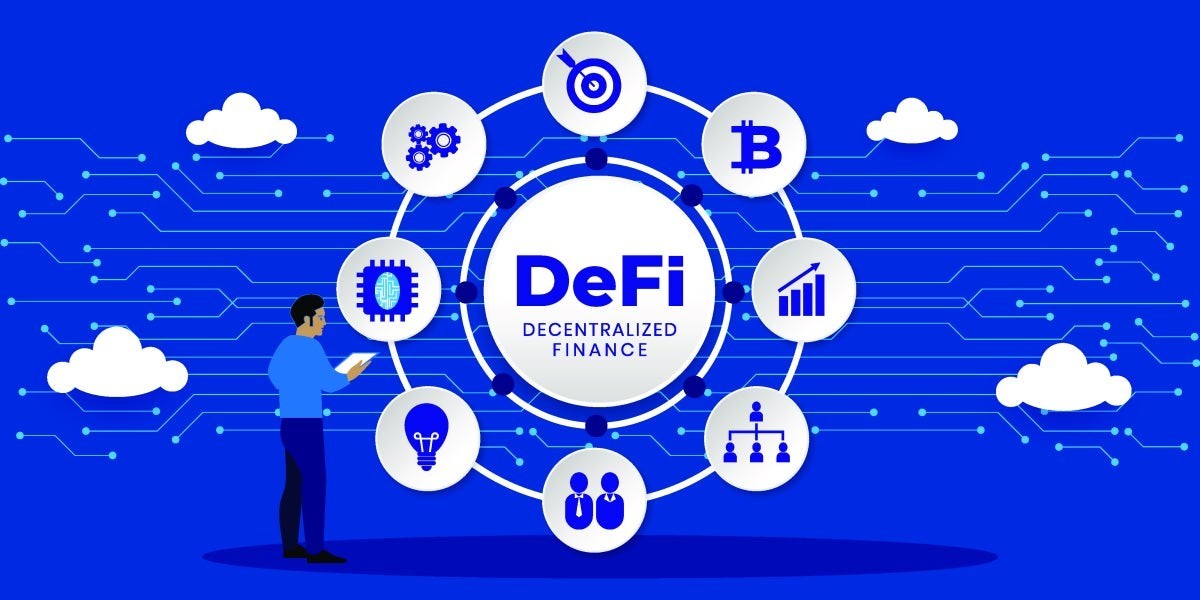Decentralized Finance (DeFi) has moved from a niche experiment to a mainstream financial force, and 2025 represents a tipping point. Users expect lightning-fast transactions, cross-chain functionality, and regulatory transparency. Venture capital is pouring into DeFi infrastructure, and traditional financial institutions are adopting on-chain products. Building a DeFi token in this environment requires a far more strategic approach than launching a simple ERC-20 in 2020. A well-crafted development plan ensures your token is not only technically sound but also sustainable, secure, and attractive to long-term participants. This blog walks through every stage of designing and executing a DeFi token development plan that can thrive in 2025’s competitive landscape.
Step 1: Clarify Your Token’s Purpose and Utility
The first step is to articulate why your token exists. Is it powering a lending protocol, enabling governance for a DAO, acting as collateral for synthetic assets, or rewarding liquidity providers? Clear utility informs every downstream decision from smart contract design to tokenomics. In 2025’s saturated market, users and investors quickly dismiss vague promises; they demand concrete value propositions. A token with a defined role fosters stronger community engagement and attracts developers who see the protocol’s long-term potential.
Step 2: Conduct Market and Competitor Analysis
Before writing a line of code, analyze your competitive landscape. Research other tokens solving similar problems and identify gaps in functionality, incentives, or governance. In 2025, DeFi categories such as cross-chain lending, real-world asset tokenization, and on-chain derivatives have matured, but each still has underserved niches. Understanding market demand helps you position your token effectively and avoid features that will be obsolete by launch. This analysis also informs marketing messages and helps you set realistic adoption goals.
Step 3: Select the Right Blockchain and Technology Stack
Your choice of blockchain determines scalability, cost, and community reach. Ethereum remains dominant, but Layer-2 rollups, app-specific chains, and modular blockchains like Cosmos, Polkadot, or Celestia offer unique advantages. Evaluate factors like transaction throughput, developer tools, and security assumptions. For most projects in 2025, a multi-chain or hybrid approach launching on a popular base chain while leveraging Layer-2 for high-volume activity delivers the best of both worlds. Decide early to avoid expensive migrations later.
Step 4: Design Tokenomics That Drive Sustainable Growth
Tokenomics is the engine of your ecosystem. In 2025, investors scrutinize emission schedules, staking rewards, and governance rights before committing capital. Plan a model that balances incentives for early adopters with long-term sustainability. Consider deflationary mechanisms like token burning, dynamic rewards tied to protocol usage, or dual-token systems separating utility from governance. Use simulations to stress-test your supply and demand scenarios under various adoption rates. Transparent tokenomics builds trust and supports price stability.
Step 5: Architect Scalable Smart Contracts
Smart contracts power your token’s functionality, and poor design can bottleneck your entire protocol. Write modular, upgradeable contracts that support future feature additions without disruptive redeployments. Optimize for gas efficiency and integrate automated testing and formal verification from day one. In 2025, users expect contracts that can handle thousands of concurrent interactions without lag or excessive fees. Investing in robust architecture upfront saves security headaches and user churn later.
Step 6: Build in Multi-Chain Interoperability
Cross-chain functionality is no longer optional. Users want to move assets seamlessly between networks, and liquidity is increasingly fragmented across chains. Plan for interoperability using protocols like LayerZero, IBC, or other decentralized bridging solutions. Implement redundant security measures, multi-sig approvals, and fail-safe mechanisms to minimize bridge risks. By enabling multi-chain usage from the start, your token can capture larger markets and remain relevant even as blockchain infrastructure evolves.
Step 7: Establish Governance and Community Frameworks
Decentralized governance is a hallmark of DeFi, but it needs careful planning to work at scale. Define how proposals are submitted, how votes are counted, and what thresholds apply. Hybrid models on-chain voting combined with elected councils or working groups are popular in 2025 because they balance decentralization with decision-making speed. Clear governance rules attract serious participants and prevent power concentration, which is essential for your token’s legitimacy and long-term health.
Step 8: Prioritize Security and Compliance from Day One
Security and regulatory alignment are not afterthoughts; they’re core pillars. Commission reputable audits, run bug bounty programs, and maintain transparent security updates. On the compliance side, integrate optional KYC for institutional participants, adhere to AML standards, and provide auditable reporting. Far from deterring users, these measures open the door to enterprise partnerships and regulated capital critical ingredients for growth in 2025.
Step 9: Design User-Friendly Interfaces and Onboarding
Even the best token will falter if interacting with it feels intimidating. In 2025, UX is a major differentiator. Provide clean dashboards, mobile-friendly apps, one-click staking, and gasless transactions where possible. Include educational content and walkthroughs so non-technical users can understand risks and rewards. Multilingual support and localized marketing widen your reach. A frictionless experience accelerates adoption and strengthens your community.
Step 10: Plan Sustainable Incentive Programs
Rewards shape user behavior, but unsustainable yields can wreck your treasury. In 2025, yield farming is evolving into loyalty-driven models: time-locked staking, dynamic APYs tied to protocol revenue, and exclusive NFT or governance privileges. Design incentive systems that reward long-term contributors rather than mercenary capital. This stabilizes liquidity, encourages governance participation, and creates a self-reinforcing growth loop.
Step 11: Integrate Oracles and External Data Sources
Most DeFi protocols rely on off-chain data such as price feeds, interest rates, or risk metrics. Integrate secure, decentralized oracles like Chainlink or Pyth, and consider redundancy across multiple providers to prevent manipulation. Oracles also enable innovative features like automated insurance payouts or dynamic collateral requirements. A robust oracle strategy expands your token’s use cases and resilience.
Step 12: Forge Strategic Partnerships and Ecosystem Integrations
Partnerships amplify your reach and utility. In 2025, successful tokens integrate with major wallets, cross-chain DEXs, lending markets, and payment gateways. Co-marketing campaigns or joint liquidity incentives with complementary protocols can dramatically increase adoption. Alliances with security firms, data analytics providers, and insurance platforms add credibility and safety. Building an interconnected ecosystem reduces your reliance on any single revenue stream and accelerates network effects.
Step 13: Launch a Comprehensive Marketing and Education Strategy
A development plan isn’t complete without a go-to-market blueprint. Craft clear messaging around your token’s utility, security, and incentives. Use multiple channels Twitter/X, Discord, Telegram, Medium, YouTube, and regional communities to reach diverse audiences. Host webinars, hackathons, and AMAs to educate potential users and developers. In 2025’s crowded environment, authentic education and transparency beat hype for building long-term trust.
Step 14: Implement Analytics and Feedback Loops
You can’t improve what you don’t measure. Deploy analytics dashboards to monitor metrics like TVL, transaction throughput, user retention, and governance participation. Use AI-driven insights to detect anomalies or security risks in real time. Collect user feedback through polls, bug bounties, and community forums. Iterate your tokenomics, UX, and partnerships based on data. Continuous improvement is the essence of scalability.
Step 15: Plan for Upgrades and Future Innovations
Technology moves fast, and DeFi is no exception. Design your token and smart contracts with upgradeability and modularity so you can integrate new standards account abstraction, privacy layers, or novel staking models without disruptive migrations. Embrace open APIs so third-party developers can build on your platform. Future-proofing your token development plan ensures you remain competitive as the ecosystem evolves.
Step 16: Learn from Leading DeFi Projects
Analyze case studies of protocols that have sustained growth Aave, Uniswap, MakerDAO, Curve and newer entrants using modular, cross-chain architectures. Examine their tokenomics, governance, incentive systems, and security practices. Adapting proven strategies reduces your learning curve and mitigates costly mistakes. Benchmarking against leaders also helps you set realistic KPIs for your own project.
Step 17: Create a Detailed Timeline and Resource Allocation
Translate your plan into an actionable roadmap. Outline phases such as research, smart contract development, audits, beta testing, marketing, and launch. Assign budgets and human resources to each stage, and build in contingency buffers for delays. A transparent roadmap not only keeps your team aligned but also signals professionalism to investors and the community.
Step 18: Conduct Thorough Testing and Beta Launches
Before full release, run testnets, audits, and closed betas to iron out issues. Simulate high-load scenarios, test governance functions, and stress-test liquidity incentives. Encourage community participation in testing by offering rewards or badges. Feedback from these early stages can reveal UX friction points and security vulnerabilities before they scale into major problems.
Step 19: Execute a Phased Mainnet Launch
A phased rollout reduces risk. Start with limited functionality or caps on deposits, then gradually unlock full features as you monitor performance. Maintain clear communication channels to update users on progress and issues. This approach builds confidence and gives you room to adjust tokenomics or contracts based on real-world data.
Step 20: Maintain Post-Launch Support and Evolution
Launching your token isn’t the end; it’s the beginning of ongoing stewardship. Continue regular audits, update your roadmap, and hold transparent governance sessions. Expand integrations, adjust incentives, and evolve UX based on user feedback. Sustained support signals commitment and turns early adopters into long-term advocates.
Conclusion
A DeFi token development plan in 2025 is far more than a technical checklist it’s a holistic strategy that integrates purpose, technology, tokenomics, governance, compliance, UX, and community. By carefully executing each stage from defining your utility to future-proofing your contracts you can launch a token that stands out in a crowded market and scales sustainably. The DeFi space will continue to evolve rapidly, but a well-designed development plan gives your project the agility and credibility to thrive in the years ahead.







